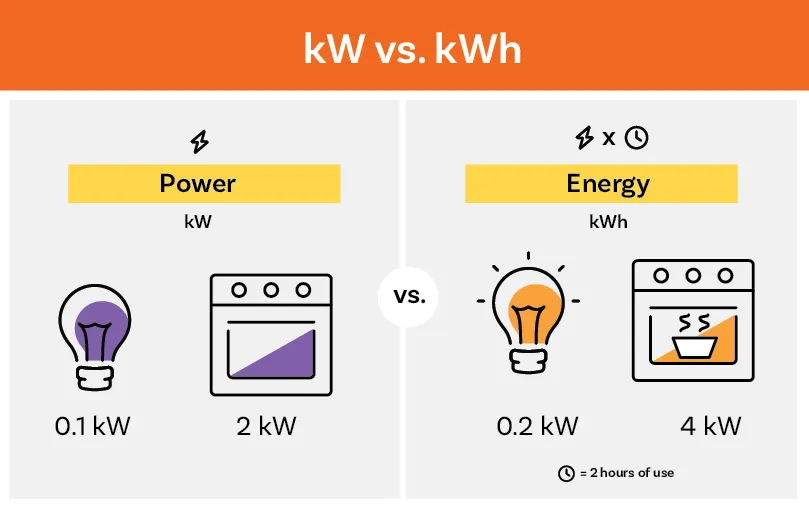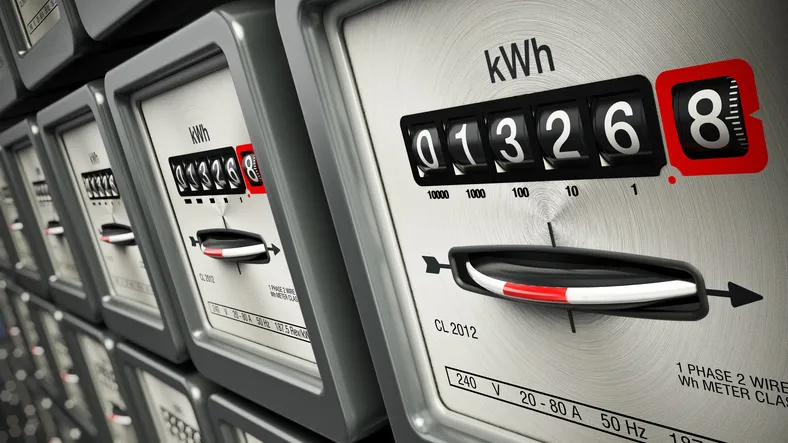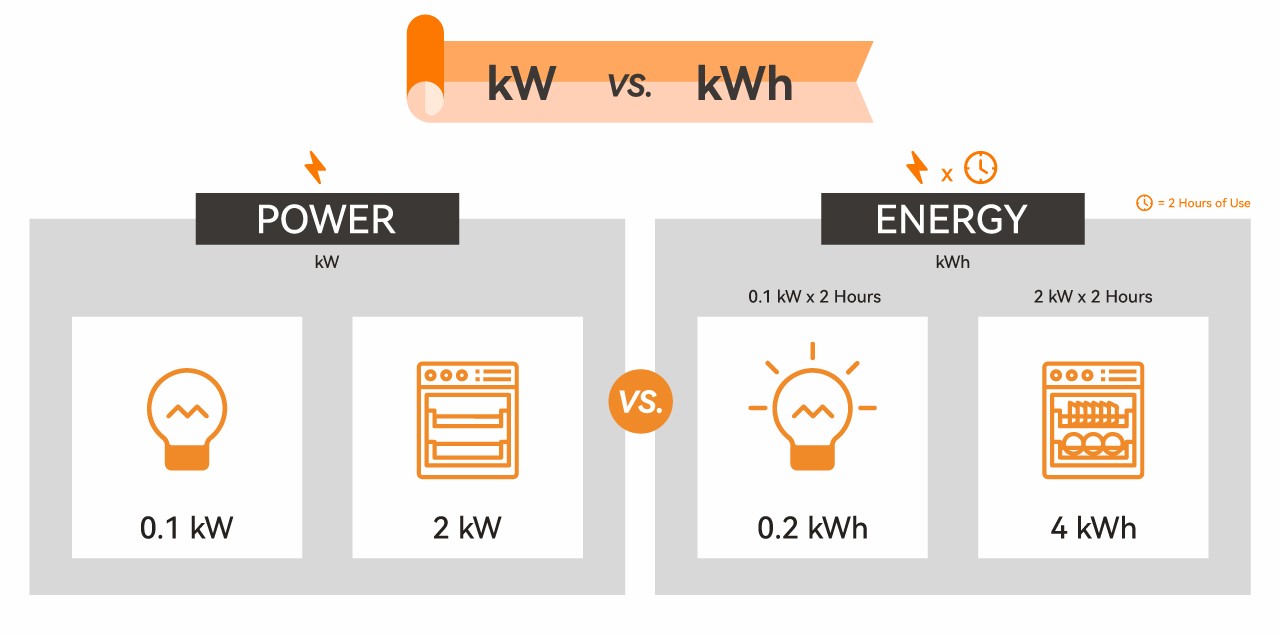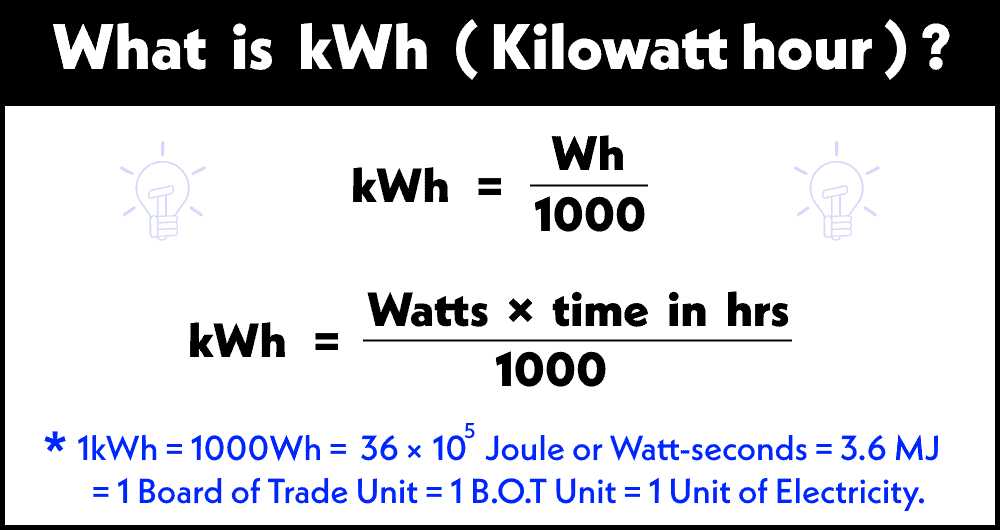Electrical Energy Consumption kWh in Home Appliances: What You Need to Know
Discover how to calculate the energy consumption of your home appliances in kWh, save money on your electric bill, and make smarter decisions about electricity usage at home.
Have you ever stopped to think about how much electricity your household appliances consume each month? If the answer is no, you're not alone. Most people only become aware of their energy consumption when the electric bill arrives with sky-high amounts.
Understanding the energy consumption in kWh (kilowatt-hours) of your home appliances is crucial for controlling costs and using electricity more intelligently. With this knowledge, you can identify the "energy hogs" in your home, optimize equipment usage, and even plan the purchase of new appliances based on energy efficiency.
In this comprehensive guide, I'll teach you practical ways to calculate the consumption of major appliances in your home, from electric water heaters to refrigerators, along with valuable tips to save energy without sacrificing comfort.
Table of Contents
- What is kWh and Why It Matters
- How to Calculate Appliance Energy Consumption
- Consumption of Major Home Appliances
- Electric Water Heater: The Biggest Energy Hog
- Air Conditioning: How to Calculate and Save
- Refrigerator and Freezer: Continuous Consumption
- TVs and Electronics: Budget Impact
- Washing and Drying Machines
- Tips to Reduce Energy Consumption
What is kWh and Why It Matters
The kWh (kilowatt-hour) is the unit of measurement that appears on your electric bill and represents the amount of energy that a 1,000-watt appliance consumes when running for one hour. It's like the "fuel" for your household appliances.
To understand better: the "k" means thousand, the "W" represents power in watts, and the "h" indicates time in hours. So, a 2,000W appliance running for 30 minutes (0.5h) consumes 1 kWh of energy.
Why does this matter for your wallet? Simple: each kWh consumed has a price, which varies according to your location and can cost between $0.10 and $0.25. When you understand how much each appliance consumes, you can make smarter decisions about when and how to use them.
Additionally, knowing appliance consumption helps you identify old and inefficient equipment that might be unnecessarily inflating your bill. A classic example is old refrigerators, which can consume up to 3 times more energy than current models.

How to Calculate Appliance Energy Consumption
Calculating the energy consumption of your household appliances is simpler than it seems. You only need two basic pieces of information: the appliance power (in watts) and usage time (in hours).
The basic formula is: Consumption in kWh = (Power in Watts × Time in Hours) ÷ 1,000
Let me show you a practical example. Imagine you have a 1,200W iron and use it for 1 hour per week. The calculation would be:
(1,200W × 1h) ÷ 1,000 = 1.2 kWh per week 1.2 kWh × 4 weeks = 4.8 kWh per month
If kWh in your area costs $0.15, this iron consumes $0.72 per month. It seems small, but when you add up all the appliances in the house, the amount can be surprising.
Where to find appliance power ratings? This information is always on the product label or in the instruction manual. Some appliances, like refrigerators, already come with monthly kWh consumption specified by the manufacturer.
To make your life even easier, you can use smartphone apps or spreadsheets to track monthly consumption of each appliance and have total control over your energy expenses.
Consumption of Major Home Appliances
Not all household appliances consume the same amount of energy, and knowing this difference is crucial for prioritizing where to save. Let me show you an overview of major appliances and their typical consumption.
High consumption appliances (more than 150 kWh/month):
- Electric water heater: 240-600 kWh/month
- Central air conditioning: 450-1,200 kWh/month
- Old refrigerator: 300-450 kWh/month
Moderate consumption appliances (30-150 kWh/month):
- 50" LED TV: 45-75 kWh/month
- Washing machine: 24-45 kWh/month
- New refrigerator: 75-120 kWh/month
Low consumption appliances (less than 30 kWh/month):
- Fan: 9-24 kWh/month
- LED bulbs: 6-15 kWh/month
- Chargers: 3-9 kWh/month
These values can vary significantly depending on power, energy efficiency, and usage time of each appliance. That's why it's important to always check the specifications of your specific equipment.
A valuable tip is to focus first on high-consumption appliances. A small change in the use of electric water heating or air conditioning can generate much greater savings than unplugging all the chargers in the house.
Creating a comfortable and efficient home office setup can help you better monitor and control your energy usage, especially if you work from home and need to balance productivity with energy efficiency.
Electric Water Heater: The Biggest Energy Hog
Electric water heating is by far the appliance that consumes the most energy in most American homes. A typical 4,500W electric water heater used for just 2 hours per day can consume more than 270 kWh per month - that represents about 60% of the electric bill for an average family.
How to calculate your water heater consumption:
Let's suppose you have a 4,500W water heater that runs for 3 hours per day to meet your family's hot water needs:
(4,500W × 3h × 30 days) ÷ 1,000 = 405 kWh/month
At $0.15 per kWh, this would cost $60.75 just for water heating! That's more than half the electric bill for many families.
Tips to save on water heating:
- Lower the thermostat to 120°F (49°C)
- Insulate the water heater tank and pipes
- Take shorter showers (reduce by 2-3 minutes)
- Consider a tankless water heater for better efficiency
- Install low-flow showerheads and faucets
For those wanting a more economical alternative in the long run, it's worth considering solar water heating. Although the initial investment is higher, the savings on the electric bill can pay off in just a few years.
For families looking to optimize their overall household management, including energy consumption habits, helpful organizational resources can make a significant difference in creating more efficient routines.

Air Conditioning: How to Calculate and Save
Air conditioning is another major energy consumer, especially during the hot summer months. Consumption varies dramatically depending on the size (BTUs), energy efficiency, and usage time.
Typical consumption table by capacity:
| BTUs | Power (W) | 8h/day (kWh/month) | Monthly cost ($0.15) |
|---|---|---|---|
| 5,000 | 600 | 144 | $21.60 |
| 8,000 | 950 | 228 | $34.20 |
| 12,000 | 1,200 | 288 | $43.20 |
| 18,000 | 1,800 | 432 | $64.80 |
These values are approximate and can vary according to the appliance's efficiency. Models with inverter technology consume about 30% less energy, as they automatically adjust power according to need.
Strategies to save on air conditioning:
- Keep the temperature between 74-78°F (23-26°C)
- Use ceiling fans for air circulation
- Close doors and windows in the cooled area
- Clean filters regularly
- Consider units with Energy Star certification
A tip that few people know is to program the air conditioner to turn off automatically during early morning hours when the outside temperature naturally decreases. Many models have a sleep function that does this automatically.
For those who work from home, consider cooling only the room where you're working instead of the entire house. This simple change can reduce consumption by half.
Setting up an efficient home office with proper temperature control can help you maintain comfort while managing energy costs effectively.
Refrigerator and Freezer: Continuous Consumption
The refrigerator is the only household appliance that runs 24 hours a day, 365 days a year. Therefore, choosing an efficient model makes a huge difference in the electric bill in the long run.
Typical consumption by refrigerator type:
| Type | Capacity | Consumption/month | Monthly cost |
|---|---|---|---|
| Compact | 7-10 cu ft | 75 kWh | $11.25 |
| Top freezer | 14-18 cu ft | 135 kWh | $20.25 |
| Side by Side | 20-25 cu ft | 180 kWh | $27.00 |
| Old refrigerator | 18 cu ft | 360 kWh | $54.00 |
As you can see, an old refrigerator consumes up to 4 times more energy than a new model of the same capacity. If your refrigerator is more than 10 years old, it's probably worth considering a replacement.
Tips to reduce refrigerator consumption:
- Keep temperature between 37-40°F (3-4°C) in the fridge and 0-5°F (-18 to -15°C) in the freezer
- Don't open the door unnecessarily
- Let food cool down before storing
- Keep the refrigerator full (but not overcrowded)
- Clean the coils regularly
Another important factor is the refrigerator's location. Avoid placing it near the stove or in areas that receive direct sunlight, as this forces the motor to work harder to maintain internal temperature.
For families looking to organize their kitchen more efficiently, including proper refrigerator use, check out our article on how to organize your fridge correctly, which provides practical tips to optimize space and reduce energy waste.

TVs and Electronics: Budget Impact
Although modern TVs are much more efficient than older models, they still represent a significant portion of consumption, especially in homes where they're on for many hours.
TV consumption by size (6h/day)
| Size | Technology | Power | Consumption/month | Cost/month |
|---|---|---|---|---|
| 32" | LED | 60W | 11 kWh | $1.65 |
| 50" | LED | 110W | 20 kWh | $3.00 |
| 65" | QLED | 150W | 27 kWh | $4.05 |
| 75" | OLED | 200W | 36 kWh | $5.40 |
Other important electronics:
- Desktop computer: 45-75 kWh/month
- Laptop: 24-36 kWh/month
- Gaming console: 30-60 kWh/month
- Wi-Fi router: 18-24 kWh/month
A common trap is appliances in standby mode. That little red light on the TV, the charger plugged into the outlet without charging anything, the microwave with the display on - all of this consumes energy unnecessarily.
Tips to save with electronics:
- Use power strips with switches to completely turn off appliances
- Configure energy-saving mode on computers
- Avoid leaving chargers plugged in without use
- Consider TVs with Energy Star certification
For families who consume a lot of home entertainment, it's worth investing in an efficient media center instead of keeping multiple devices running simultaneously.
If you're looking to upgrade your entertainment setup, consider investing in the best smart TVs to buy in 2025 for better energy efficiency and features.
Washing and Drying Machines
Washing machines are relatively economical, but consumption can vary greatly depending on frequency of use and selected programs.
Typical washing machine consumption:
- Standard top-load washer: 2.5-4 kWh per load
- High-efficiency front-load: 1.5-2.5 kWh per load
- Usage 3x per week: 30-48 kWh/month
- Monthly cost: $4.50-7.20
Washer-dryer combos consume much more:
- Power: 2,000-3,000W
- Consumption per complete cycle: 4-6 kWh
- Usage 2x per week: 32-48 kWh/month
- Monthly cost: $4.80-7.20
The big energy hog here is the drying function, which uses electric heating elements to warm the air. If possible, use only the washing function and hang clothes to dry.
Tips to save:
- Use cold water whenever possible
- Wash clothes only with full loads
- Choose eco-friendly programs
- Avoid the drying function when unnecessary
A smart strategy is to wash clothes during off-peak hours (usually 10 PM to 6 AM), when energy rates may be cheaper in some areas.
For more guidance on optimizing household tasks, check out our comprehensive guide on how to keep your kitchen always clean and organized.
Another important point is regular maintenance. A machine with clean filters and no mechanical problems consumes less energy and lasts longer.

Tips to Reduce Energy Consumption
Now that you know how to calculate the consumption of major appliances, it's time for practical tips to significantly reduce your electric bill without sacrificing comfort.
Habit changes that make a difference:
1. Replace bulbs with LEDs A 60W incandescent bulb consumes 18 kWh/month, while an equivalent LED consumes only 3 kWh/month. That's 83% savings!
2. Use natural light Open curtains and blinds during the day. A well-naturally-lit home can reduce bulb usage by up to 50% during daylight hours.
3. Unplug appliances from outlets That standby mode consumes energy 24/7. A set of appliances in standby can consume 15-20 kWh/month unnecessarily.
4. Optimize air conditioning use Use ceiling fans along with air conditioning. This allows you to maintain a temperature 2-3°F higher while keeping the same comfort, saving up to 30% energy.
5. Cook intelligently Use pressure cookers to cook faster, take advantage of residual heat from the stove, and avoid opening the oven unnecessarily.
Investments that pay off medium-term:
- Solar water heating: Can reduce 70-90% of water heating costs
- Energy Star appliances: Consume 30-50% less energy
- Thermal insulation: Reduces the need for air conditioning
- Smart home systems: Automatically control lights and appliances
For those seeking a more systematic approach to household savings, including energy cost control, investing in smart home devices can provide automated energy management and significant long-term savings.
Control and monitoring:
Consider using individual energy meters to track consumption of major appliances. There are models that connect to Wi-Fi and allow you to monitor consumption on your phone in real-time.
Keep a monthly record of total consumption and major appliances. This helps identify unusual increases and evaluate the impact of changes you've implemented.
For comprehensive home organization that includes energy efficiency, explore our guide on how to keep your bathroom always clean, organized and smelling good, which includes tips for efficient use of bathroom appliances.
Additional Energy-Saving Strategies:
Time-of-Use Planning: Many utility companies offer time-of-use rates where electricity costs less during off-peak hours. Plan to run major appliances like dishwashers, washing machines, and water heaters during these cheaper periods.
Seasonal Adjustments: Adjust your home's energy usage based on seasons. In winter, lower your thermostat by 2-3 degrees and use extra blankets. In summer, raise it by the same amount and use fans for circulation.
Regular Maintenance: Keep HVAC systems, water heaters, and major appliances well-maintained. Clean filters, tune-ups, and timely repairs can improve efficiency by 10-25%.
Smart Power Strips: Invest in advanced power strips that automatically cut power to devices in standby mode, eliminating phantom loads that can account for 5-10% of your total electricity use.
For those interested in comprehensive home efficiency improvements, consider exploring vacuum cleaners that are energy-efficient to maintain clean spaces without excessive power consumption.
Conclusion
Understanding your home appliances' energy consumption is the first step to having total control over your electric bill. With the information and tips I've shared in this guide, you can:
- Calculate exactly how much each appliance consumes per month
- Identify the biggest energy hogs in your home
- Implement simple changes that generate real savings
- Make smarter decisions when buying new appliances
Remember: small changes in usage habits can generate big savings throughout the year. Start with the highest consumption appliances - water heating, air conditioning, and refrigeration - and gradually implement the other tips.
The important thing is to maintain control and track results. With dedication and the right strategies, it's possible to reduce your electric bill by 20-40% without sacrificing the comfort you and your family deserve.
For more tips on home efficiency and organization, continue following our articles on how to save electricity at home and explore energy-efficient solutions for every room in your house.
Whether you're looking to upgrade your home office essentials, improve your living room setup, or enhance your reading corner with a Kindle, remember that energy efficiency should be part of every purchasing decision.

